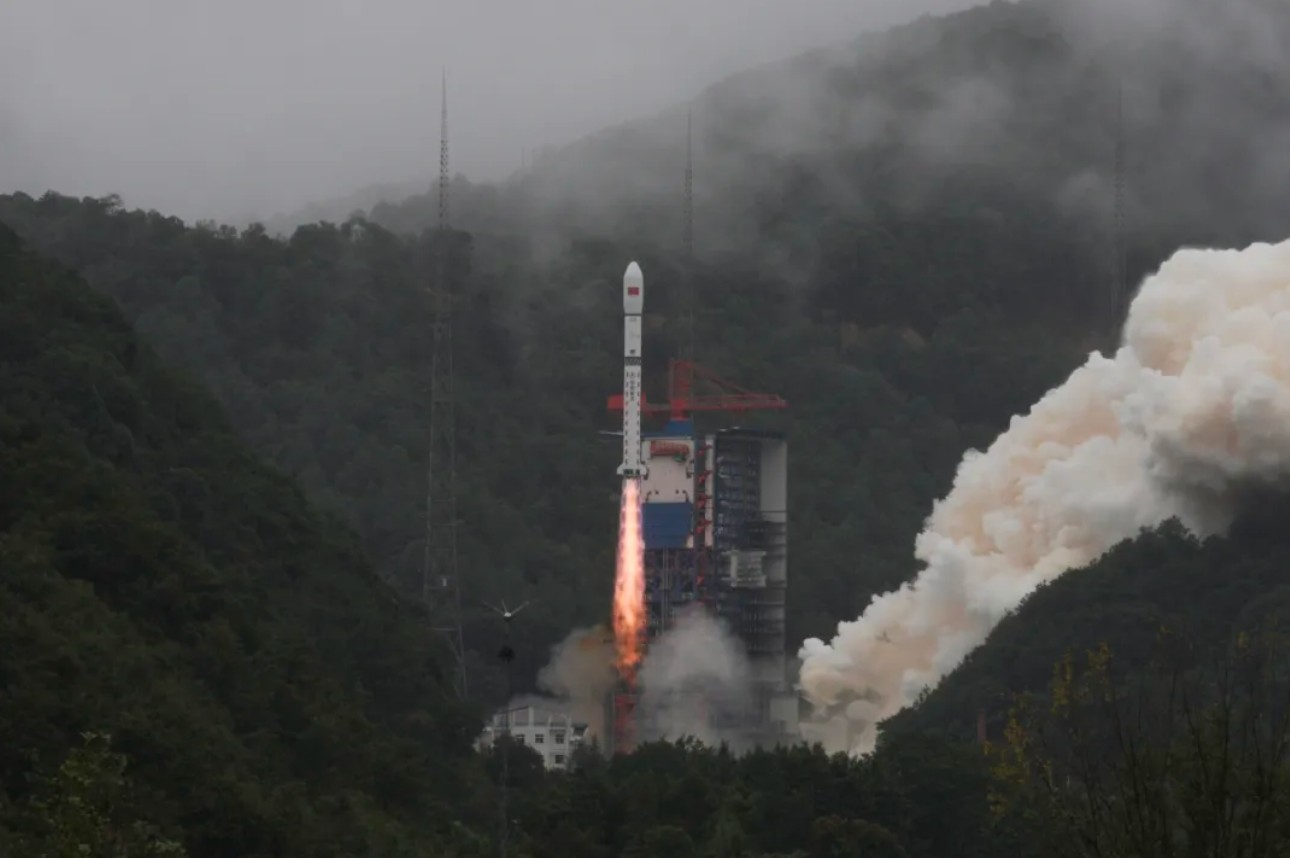A Long March 2D rocket successfully launched a new set of experimental satellites into orbit on September 28, 2025, marking a significant milestone in China’s space activities. The launch took place at 23:00 Eastern time from the Xichang Satellite Launch Center in southwest China, as the rocket ascended through dense cloud cover. The China Aerospace Science and Technology Corporation (CASC) confirmed the successful deployment of the Shiyan-30 (01) and (02) satellites shortly after liftoff.
The Shiyan satellites are primarily designed for testing and validating Earth observation technologies, according to CASC. Developed by the Shanghai Academy of Spaceflight Technology (SAST), these satellites are part of a broader initiative focused on space environment detection and related technology experiments. While details regarding the specific functionalities of the Shiyan-30 satellites remain scarce, they were cataloged by U.S. space domain awareness teams in orbits approximately 590 kilometers above Earth, with a 35-degree inclination.
Expanding Capabilities with Shiyan Missions
Shiyan missions have been characterized by their opaqueness, yet outside analysts suggest that these satellites are integral to China’s efforts in trialing advanced systems, including sensors, communications subsystems, and environmental instruments. The Shiyan series has been utilized for various applications, such as technology demonstrations, electronic intelligence, and remote sensing. Notably, some satellites have been engaged in space operations, including rendezvous and proximity maneuvers.
In recent months, the Shiyan program has seen a variety of activities. Several Shiyan satellites operate in low Earth or near-polar orbits, while others, such as Shiyan-12 (01) and (02), have been launched into geostationary orbits. For instance, Shiyan-12 (02) was recently observed approaching and likely imaging the Space Based Infrared System (SBIRS) GEO 6 spacecraft, designated as USA 336, within the geostationary belt.
The newly launched Shiyan-29 is currently tracked in an orbit approximately 800 kilometers above geostationary orbit, exhibiting a unique inclination of 28.5 degrees. This positioning complicates characterization and imaging efforts, leaving the precise purpose of this mission unclear.
Record-Setting Launch Cadence
The September 28 launch marked the 100th flight of the Long March 2D rocket, becoming only the second Chinese launch vehicle to achieve this milestone, following the Long March 3B. This event also constituted China’s 10th launch of the month, making September 2025 one of the busiest months in the nation’s spaceflight history.
Recent missions included the launch of Shiyan-29, a Ceres-1 solid rocket, and a series of military-related Yaogan satellites. Notably, the Yaogan-45 mission successfully delivered a large Earth observation satellite into medium Earth orbit, while additional launches contributed to the Guowang and Geesatcom constellations, along with China’s Fengyun weather satellite fleet.
With the September 28 launch, China has completed 59 orbital launch attempts in 2025, including one failure attributed to the loss of a Zhuque-2E rocket operated by commercial entity Landspace in August. Looking ahead, upcoming missions include a Long March 8A launch from the Hainan commercial spaceport and the second Gravity-1 solid rocket from Orienspace, both anticipated around October 10.
As China continues to expand its capabilities in space, the successful deployment of the Shiyan-30 satellites exemplifies the country’s commitment to advancing its technological prowess and innovation in satellite development.
